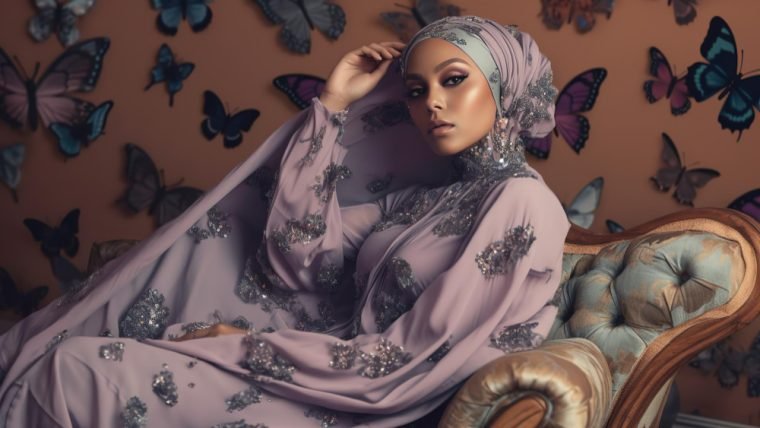Fashion has always played a significant role in the business world. The way we dress can have a profound impact on how we are perceived by others, and this is especially true in the boardroom. The way executives and employees present themselves can influence their credibility, professionalism, and overall success in the workplace.
In the boardroom, where important decisions are made and deals are sealed, dressing for success is crucial. The way individuals dress can convey their level of professionalism, attention to detail, and respect for the company and its stakeholders. A well-dressed individual is more likely to be taken seriously and command respect from their colleagues and clients.
The Importance of Sustainable Fashion in the Boardroom
Sustainable fashion refers to clothing and accessories that are produced in an environmentally and socially responsible manner. It takes into account the entire lifecycle of a product, from design and production to distribution and disposal. Incorporating sustainable fashion in the workplace has numerous benefits.
Firstly, sustainable fashion reduces the environmental impact of the fashion industry. Traditional fashion production methods often involve harmful chemicals, excessive water usage, and high levels of waste. By choosing sustainable fashion brands and practices, companies can minimize their carbon footprint and contribute to a more sustainable future.
Secondly, sustainable fashion promotes ethical labor practices. Many fast fashion brands have been criticized for exploiting workers in developing countries, paying them low wages and subjecting them to unsafe working conditions. By supporting brands that prioritize fair labor practices, companies can ensure that their clothing is produced ethically.
Some examples of sustainable fashion brands include Patagonia, which is known for its commitment to environmental sustainability and fair labor practices. Another example is Everlane, which focuses on transparency in its supply chain and provides detailed information about its factories and production processes.
Eco-Fashion: A Growing Trend in the Boardroom
Eco-fashion goes beyond sustainability by incorporating elements of environmental conservation and social responsibility. It involves using organic and recycled materials, reducing waste, and supporting local communities. Eco-fashion is becoming increasingly popular in the business world as companies recognize the importance of aligning their values with their clothing choices.
Eco-fashion brands are gaining traction in the boardroom as executives and employees seek to make a positive impact on the environment and society. These brands prioritize eco-friendly materials, such as organic cotton and recycled polyester, and use innovative production methods to minimize waste and pollution.
One example of an eco-fashion brand is Reformation, which focuses on sustainable materials and practices. The company uses recycled fabrics, repurposes vintage clothing, and invests in renewable energy. Another example is Stella McCartney, a luxury brand that is known for its commitment to animal welfare and sustainable fashion.
The Role of Technology in Fashion and the Boardroom
Technology has revolutionized the fashion industry in recent years, and its impact is also being felt in the boardroom. From virtual reality fashion shows to smart fabrics, technology is changing the way we design, produce, and consume fashion.
In the boardroom, technology is being used to enhance the shopping experience for customers. Companies are using virtual reality and augmented reality to create immersive shopping experiences, allowing customers to try on clothes virtually before making a purchase. This technology also enables companies to gather data on customer preferences and tailor their offerings accordingly.
Another way technology is being used in the boardroom is through wearable technology. Smartwatches and fitness trackers are becoming increasingly popular among professionals, allowing them to stay connected and track their health and wellness throughout the workday.
While technology offers numerous benefits in the boardroom, there are also challenges to consider. Privacy concerns, data security, and the potential for job displacement are all factors that need to be carefully managed when incorporating technology into fashion and the workplace.
The Impact of Social Media on Fashion in the Boardroom
Social media has had a profound impact on the fashion industry, and its influence is also being felt in the boardroom. Platforms like Instagram, Facebook, and LinkedIn have become powerful tools for individuals and companies to showcase their personal style and professional brand.
In the boardroom, social media is being used to promote brands, engage with customers, and build relationships with influencers and industry leaders. Companies are leveraging social media platforms to share behind-the-scenes content, highlight their corporate culture, and connect with their target audience.
However, incorporating social media into fashion and the boardroom also comes with challenges. Maintaining a consistent brand image, managing online reputation, and dealing with negative feedback are all considerations that companies need to address when using social media in the workplace.
The Future of Fashion and the Boardroom: Predictions from Industry Leaders

Industry leaders have made several predictions about the future of fashion in the boardroom. One prediction is that sustainability will become a non-negotiable requirement for fashion brands. As consumers become more conscious of their environmental impact, they will demand that companies prioritize sustainability in their products and practices.
Another prediction is that technology will continue to play a significant role in fashion and the boardroom. Virtual reality fashion shows, personalized shopping experiences, and wearable technology are just a few examples of how technology will shape the future of fashion.
Additionally, diversity and inclusion will become increasingly important in the boardroom. As society becomes more diverse, companies will need to ensure that their leadership teams reflect this diversity. This includes not only racial and ethnic diversity but also gender diversity and representation of different backgrounds and perspectives.
The Intersection of Fashion and Business: Insights from Fashion Executives
To gain further insights into the role of fashion in the business world, I interviewed several fashion executives. They emphasized the importance of dressing for success in the boardroom, noting that it can significantly impact how individuals are perceived by their colleagues and clients.
The executives also highlighted the importance of staying up-to-date with fashion trends and incorporating them into the workplace. They noted that fashion is a powerful tool for self-expression and can help individuals stand out in a competitive business environment.
Furthermore, the executives emphasized the need for companies to align their fashion choices with their values. They noted that consumers are increasingly conscious of the social and environmental impact of their clothing choices and expect companies to prioritize sustainability, ethics, and transparency.
The Role of Diversity and Inclusion in Fashion and the Boardroom
Diversity and inclusion are crucial in the fashion industry, as they bring different perspectives, ideas, and experiences to the table. In the boardroom, diversity and inclusion can lead to better decision-making, increased innovation, and improved business performance.
Many brands and companies are recognizing the importance of diversity and inclusion in the workplace and are taking steps to promote it. They are implementing diversity training programs, creating inclusive hiring practices, and fostering a culture of inclusivity.
Some examples of brands that prioritize diversity and inclusion include Nike, which has made significant efforts to promote gender equality in its workforce, and L’Oreal, which has launched initiatives to increase racial diversity in its leadership positions.
The Importance of Ethics and Transparency in the Fashion Industry
Ethics and transparency are becoming increasingly important in the fashion industry as consumers demand more information about how their clothes are made. Brands that prioritize ethics and transparency are not only meeting consumer expectations but also differentiating themselves from their competitors.
Ethical fashion brands prioritize fair labor practices, ensuring that workers are paid fair wages and provided with safe working conditions. They also focus on using sustainable materials and minimizing waste throughout the production process.
Transparency is also crucial in the fashion industry. Consumers want to know where their clothes come from, who made them, and under what conditions. Brands that provide this information build trust with their customers and demonstrate their commitment to ethical practices.
Trends to Watch: What’s Next for Fashion in the Boardroom?
Looking ahead, there are several trends to watch in fashion and the boardroom. One trend is the rise of athleisure wear, which combines comfort and style. As more companies adopt flexible work arrangements and prioritize employee well-being, athleisure wear is becoming more acceptable in the workplace.
Another trend is the increased focus on personal branding. Professionals are recognizing the importance of cultivating a strong personal brand and using fashion as a tool for self-expression. This includes incorporating unique accessories, experimenting with different styles, and staying true to one’s personal style.
Finally, sustainability will continue to be a major trend in fashion and the boardroom. As consumers become more conscious of their environmental impact, they will demand that companies prioritize sustainability in their products and practices. This includes using eco-friendly materials, reducing waste, and supporting ethical labor practices.
In conclusion, fashion plays a significant role in the boardroom. Dressing for success can impact how individuals are perceived by their colleagues and clients, and incorporating sustainable fashion can contribute to a more environmentally and socially responsible workplace. Technology and social media are also changing the way we view fashion in the workplace, while diversity and inclusion, ethics, and transparency are becoming increasingly important in the fashion industry. As we look to the future, trends such as athleisure wear, personal branding, and sustainability will continue to shape fashion in the boardroom.




